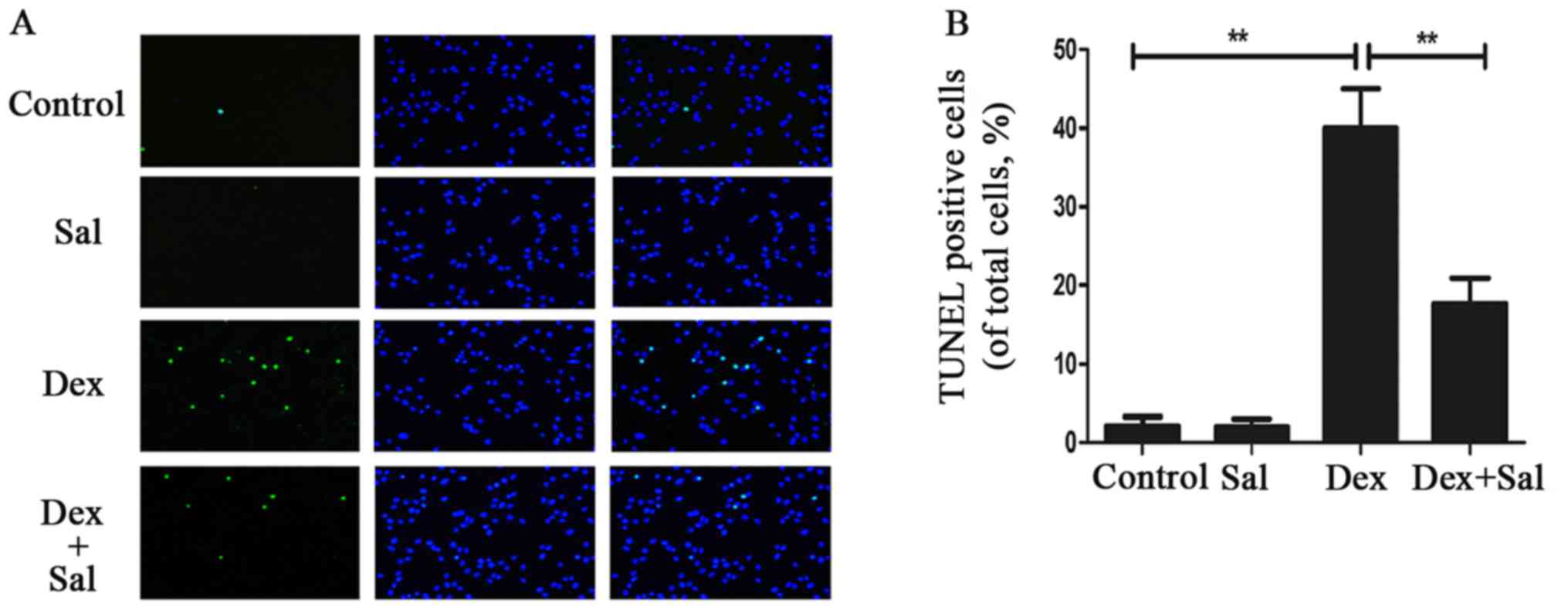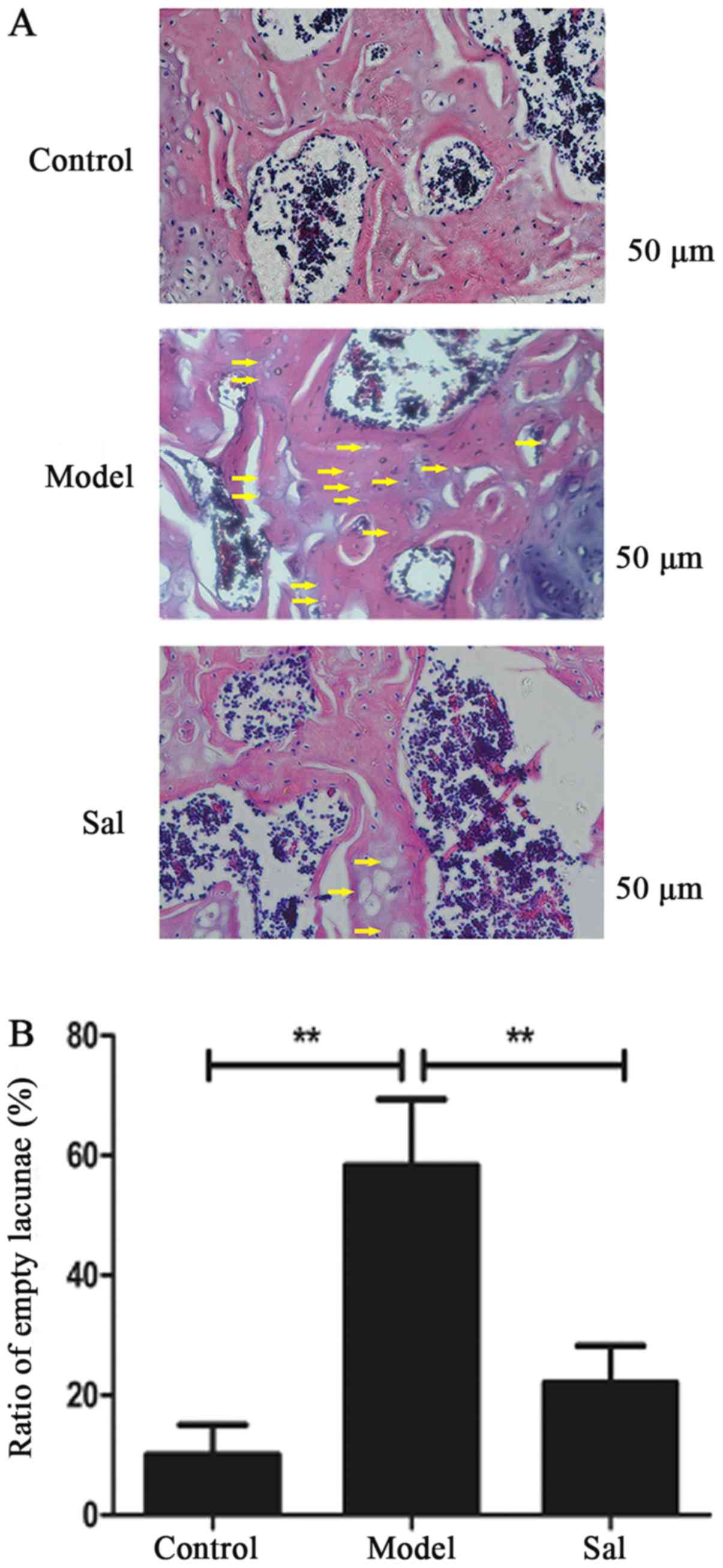|
1
|
Simon JP, Berger P and Bellemans J: Total
hip arthroplasty in patients less than 40 years old with avascular
necrosis of the femoral head. A 5 to 19-year follow-up study. Acta
Orthop Belg. 77:53–60. 2011.PubMed/NCBI
|
|
2
|
Motomura G, Yamamoto T, Yamaguchi R,
Ikemura S, Nakashima Y, Mawatari T and Iwamoto Y: Morphological
analysis of collapsed regions in osteonecrosis of the femoral head.
J Bone Joint Surg Br. 93:184–187. 2011. View Article : Google Scholar : PubMed/NCBI
|
|
3
|
Tanaka Y, Yoshikawa N, Hattori S, Sasaki
S, Ando T, Ikeda M and Honda M; Japanese Study Group for Renal
Disease in Children, : Combination therapy with steroids and
mizoribine in juvenile SLE: A randomized controlled trial. Pediatr
Nephrol. 25:877–882. 2010. View Article : Google Scholar : PubMed/NCBI
|
|
4
|
Hodson EM and Alexander SI: Evaluation and
management of steroid-sensitive nephrotic syndrome. Curr Opin
Pediatr. 20:145–150. 2008. View Article : Google Scholar : PubMed/NCBI
|
|
5
|
Tönshoff B, Höcker B and Weber LT: Steroid
withdrawal in pediatric and adult renal transplant recipients.
Pediatr Nephrol. 20:409–417. 2005. View Article : Google Scholar : PubMed/NCBI
|
|
6
|
Schäcke H, Döcke WD and Asadullah K:
Mechanisms involved in the side effects of glucocorticoids.
Pharmacol Ther. 96:23–43. 2002. View Article : Google Scholar : PubMed/NCBI
|
|
7
|
Nagasawa K, Tada Y, Koarada S, Tsukamoto
H, Horiuchi T, Yoshizawa S, Murai K, Ueda A, Haruta Y and Ohta A:
Prevention of steroid-induced osteonecrosis of femoral head in
systemic lupus erythematosus by anti-coagulant. Lupus. 15:354–357.
2006. View Article : Google Scholar : PubMed/NCBI
|
|
8
|
Weinstein RS, Jilka RL, Parfitt AM and
Manolagas SC: Inhibition of osteoblastogenesis and promotion of
apoptosis of osteoblasts and osteocytes by glucocorticoids.
Potential mechanisms of their deleterious effects on bone. J Clin
Invest. 102:274–282. 1998. View
Article : Google Scholar : PubMed/NCBI
|
|
9
|
Kim HJ: New understanding of
glucocorticoid action in bone cells. BMB Rep. 43:524–529. 2010.
View Article : Google Scholar : PubMed/NCBI
|
|
10
|
Souttou B, Raulais D and Vigny M:
Pleiotrophin induces angiogenesis: Involvement of the
phosphoinositide-3 kinase but not the nitric oxide synthase
pathways. J Cell Physiol. 187:59–64. 2001. View Article : Google Scholar : PubMed/NCBI
|
|
11
|
Himburg HA, Muramoto GG, Daher P, Meadows
SK, Russell JL, Doan P, Chi JT, Salter AB, Lento WE, Reya T, et al:
Pleiotrophin regulates the expansion and regeneration of
hematopoietic stem cells. Nat Med. 16:475–482. 2010. View Article : Google Scholar : PubMed/NCBI
|
|
12
|
Feng Z, Zheng W, Tang Q, Cheng L, Li H, Ni
W and Pan X: Fludarabine inhibits STAT1-mediated up-regulation of
caspase-3 expression in dexamethasone-induced osteoblasts apoptosis
and slows the progression of steroid-induced avascular necrosis of
the femoral head in rats. Apoptosis. 22:1001–1012. 2017. View Article : Google Scholar : PubMed/NCBI
|
|
13
|
Chen X, Zhang Q, Cheng Q and Ding F:
Protective effect of salidroside against
H2O2-induced cell apoptosis in primary
culture of rat hippocampal neurons. Mol Cell Biochem. 332:85–93.
2009. View Article : Google Scholar : PubMed/NCBI
|
|
14
|
Huang SC, Lee FT, Kuo TY, Yang JH and
Chien CT: Attenuation of long-term Rhodiola rosea supplementation
on exhaustive swimming-evoked oxidative stress in the rat. Chin J
Physiol. 52:316–324. 2009. View Article : Google Scholar : PubMed/NCBI
|
|
15
|
Ma L, Cai D, Li H, Tong B, Song L and Wang
Y: Anti-fatigue effects of salidroside in mice. J Med Coll PLA.
23:88–93. 2008. View Article : Google Scholar
|
|
16
|
Van Diermen D, Marston A, Bravo J, Reist
M, Carrupt PA and Hostettmann K: Monoamine oxidase inhibition by
Rhodiola rosea L. roots. J Ethnopharmacol. 122:397–401. 2009.
View Article : Google Scholar : PubMed/NCBI
|
|
17
|
Zhang L, Yu H, Sun Y, Lin X, Chen B, Tan
C, Cao G and Wang Z: Protective effects of salidroside on hydrogen
peroxide-induced apoptosis in SH-SY5Y human neuroblastoma cells.
Eur J Pharmacol. 564:18–25. 2007. View Article : Google Scholar : PubMed/NCBI
|
|
18
|
Chen X, Liu J, Gu X and Ding F:
Salidroside attenuates glutamate-induced apoptotic cell death in
primary cultured hippocampal neurons of rats. Brain Res.
1238:189–198. 2008. View Article : Google Scholar : PubMed/NCBI
|
|
19
|
Lu Z, Jiang G, Chen Y, Wang J, Muhammad I,
Zhang L, Wang R, Liu F, Li R, Qian F and Li J: Salidroside
attenuates colistin-induced neurotoxicity in RSC96 Schwann cells
through PI3K/Akt pathway. Chem Biol Interact. 271:67–78. 2017.
View Article : Google Scholar : PubMed/NCBI
|
|
20
|
Aziz SA, Davies M, Pick E, Zito C,
Jilaveanu L, Camp RL, Rimm DL, Kluger Y and Kluger HM:
Phosphatidylinositol-3-kinase as a therapeutic target in melanoma.
Clin Cancer Res. 15:3029–3036. 2009. View Article : Google Scholar : PubMed/NCBI
|
|
21
|
Cantrell DA: Phosphoinositide 3-kinase
signaling pathways. J Cell Sci. 114:1439–1445. 2001.PubMed/NCBI
|
|
22
|
Gu YX, Du J, Si MS, Mo JJ, Qiao SC and Lai
HC: The roles of PI3K/Akt signaling pathway in regulating MC3T3-E1
preosteoblast proliferation and differentiation on SLA and SLActive
titanium surfaces. J Biomed Mater Res A. 101:748–754. 2013.
View Article : Google Scholar : PubMed/NCBI
|
|
23
|
Guntur AR and Rosen CJ: The skeleton: A
multi-functional complex organ: New insights into osteoblasts and
their role in bone formation: The central role of PI3Kinase. J
Endocrinol. 211:123–130. 2011. View Article : Google Scholar : PubMed/NCBI
|
|
24
|
Li L, Xia Y, Wang Z, Cao X, Da Z, Guo G,
Qian J, Liu X, Fan Y, Sun L, et al: Suppression of the PI3K-Akt
pathway is involved in the decreased adhesion and migration of bone
marrow-derived mesenchymal stem cells from nonobese diabetic mice.
Cell Biol Int. 35:961–966. 2011. View Article : Google Scholar : PubMed/NCBI
|
|
25
|
Wang J, Ma XY, Feng YF, Ma ZS, Ma TC,
Zhang Y, Li X, Wang L and Lei W: Magnesium ions promote the
biological behaviour of rat calvarial osteoblasts by activating the
PI3K/Akt signaling pathway. Biol Trace Elem Res. 179:284–293. 2017.
View Article : Google Scholar : PubMed/NCBI
|
|
26
|
Abdi A, Sadraie H, Dargahi L, Khalaj L and
Ahmadiani A: Apoptosis inhibition can be threatening in Aβ-induced
neuroinflammation, through promoting cell proliferation. Neurochem
Res. 36:39–48. 2011. View Article : Google Scholar : PubMed/NCBI
|
|
27
|
Yamamoto T, Irisa T, Sugioka Y and Sueishi
K: Effects of pulse methylprednisolone on bone and marrow tissues:
Corticosteroid-induced osteonecrosis in rabbits. Arthritis Rheum.
40:2055–2064. 1997. View Article : Google Scholar : PubMed/NCBI
|
|
28
|
Xu X, Wen H, Hu Y, Yu H, Zhang Y, Chen C
and Pan X: STAT1-caspase 3 pathway in the apoptotic process
associated with steroid-induced necrosis of the femoral head. J Mol
Histol. 45:473–485. 2014. View Article : Google Scholar : PubMed/NCBI
|
|
29
|
Zhang W, He H, Song H, Zhao J, Li T, Wu L,
Zhang X and Chen J: Neuroprotective effects of salidroside in the
MPTP mouse model of Parkinson's disease: Involvement of the
PI3K/Akt/GSK3β pathway. Parkinsons Dis. 2016:94501372016.PubMed/NCBI
|
|
30
|
Dai WW, Wang LB, Jin GQ, Wu HJ, Zhang J,
Wang CL, Wei YJ, Lee JH, Lay YE and Yao W: Beta-ecdysone protects
mouse osteoblasts from glucocorticoid-induced apoptosis in vitro.
Planta Med. 83:888–894. 2017. View Article : Google Scholar : PubMed/NCBI
|
|
31
|
Chua CC, Chua BH, Chen Z, Landy C and
Hamdy RC: Dexamethasone induces caspase activation in murine
osteoblastic MC3T3-E1 cells. Biochim Biophys Acta. 1642:79–85.
2003. View Article : Google Scholar : PubMed/NCBI
|
|
32
|
Ryu JS, Ko JH, Kim MK, Wee WR and Oh JY:
Prednisolone induces apoptosis in corneal epithelial cells through
the intrinsic pathway. Sci Rep. 7:41352017. View Article : Google Scholar : PubMed/NCBI
|
|
33
|
Calder JD, Buttery L, Revell PA, Pearse M
and Polak JM: Apoptosis-a significant cause of bone cell death in
osteonecrosis of the femoral head. J Bone Joint Surg Br.
86:1209–1213. 2004. View Article : Google Scholar : PubMed/NCBI
|
|
34
|
Manning BD and Cantley LC: AKT/PKB
signaling: Navigating downstream. Cell. 129:1261–1274. 2007.
View Article : Google Scholar : PubMed/NCBI
|
|
35
|
Pap M and Cooper GM: Role of glycogen
synthase kinase-3 in the phosphatidylinositol 3-kinase/Akt cell
survival pathway. J Biol Chem. 273:19929–19932. 1998. View Article : Google Scholar : PubMed/NCBI
|
|
36
|
Kang JQ, Chong ZZ and Maiese K: Critical
role for Akt1 in the modulation of apoptotic phosphatidylserine
exposure and microglial activation. Mol Pharmacol. 64:557–569.
2003. View Article : Google Scholar : PubMed/NCBI
|
|
37
|
Zhu Y, Shi YP, Wu D, Ji YJ, Wang X, Chen
HL, Wu SS, Huang DJ and Jiang W: Salidroside protects against
hydrogen peroxide-induced injury in cardiac H9c2 cells via PI3K-Akt
dependent pathway. DNA Cell Biol. 30:809–819. 2011. View Article : Google Scholar : PubMed/NCBI
|
|
38
|
Zhang L, Ding W, Sun H, Zhou Q, Huang J,
Li X, Xie Y and Chen J: Salidroside protects PC12 cell from
MPP+-induced apoptosis via activation of the PI3K/Akt
pathway. Food Chem Toxicol. 50:2591–2597. 2012. View Article : Google Scholar : PubMed/NCBI
|
|
39
|
Li DW, Liu ZQ, Chen W, Yao M and Li GR:
Association of glycogen synthase kinase-3β with Parkinson's disease
(review). Mol Med Rep. 9:2043–2050. 2014. View Article : Google Scholar : PubMed/NCBI
|
|
40
|
Chao DT and Korsmeyer SJ: BCL-2 family:
Regulators of cell death. Annu Rev Immunol. 16:395–419. 1998.
View Article : Google Scholar : PubMed/NCBI
|
|
41
|
Hu WP, Yu HS, Sung PJ, Tsai FY, Shen YK,
Chang LS and Wang JJ: DC-81-Indole conjugate agent induces
mitochondria mediated apoptosis in human melanoma A375 cells. Chem
Res Toxicol. 20:905–912. 2007. View Article : Google Scholar : PubMed/NCBI
|
|
42
|
Steffen RT, Athanasou NA, Gill HS and
Murray DW: Avascular necrosis associated with fracture of the
femoral neck after hip resurfacing: Histological assessment of
femoral bone from retrieval specimens. J Bone Joint Surg Br.
92:787–793. 2010. View Article : Google Scholar : PubMed/NCBI
|














